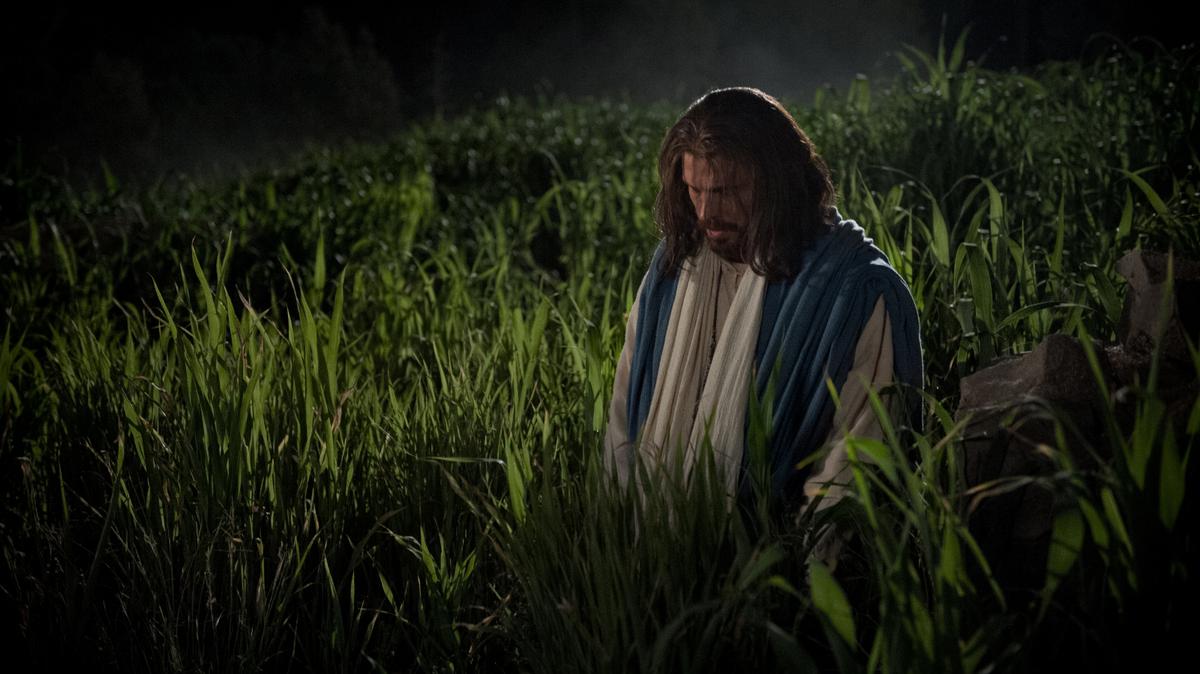Home>Special Themes>How To Teach Advent To Kids


Special Themes
How To Teach Advent To Kids
Published: February 12, 2024
Jason DeRose, Managing Editor at Christian.net, uses his expertise in religion and journalism to deepen understanding of faith's societal impacts. His editorial leadership, coupled with a strong academic background, enriches the platform’s diverse content, earning him recognition in both journalism and religious circles.
Discover creative and engaging ways to teach the special theme of Advent to kids, with fun activities and meaningful lessons that will captivate young minds. Explore our expert tips and resources for a memorable Advent experience.
(Many of the links in this article redirect to a specific reviewed product. Your purchase of these products through affiliate links helps to generate commission for Christian.net, at no extra cost. Learn more)
Table of Contents
Introduction
Advent is a special time of anticipation and preparation for the joyous celebration of Christmas. It marks the beginning of the liturgical year in many Christian traditions and is a period of spiritual significance for families around the world. As parents and educators, introducing children to the meaning and traditions of Advent can be a rewarding and enriching experience. It provides an opportunity to instill the values of hope, love, joy, and peace in young hearts, fostering a deeper understanding of the true meaning of Christmas.
During Advent, families come together to reflect on the significance of the season and engage in various traditions and activities that symbolize the waiting and preparation for the birth of Jesus Christ. This period, typically spanning four weeks leading up to Christmas, is a time of joyful anticipation and spiritual growth. By introducing children to the customs and symbols associated with Advent, we can help them develop a sense of reverence and appreciation for the spiritual aspects of the holiday season.
In this article, we will explore the rich meaning of Advent, delve into its traditions and symbols, and provide valuable tips and activities for teaching Advent to kids. By embracing the spirit of Advent and sharing its traditions with children, we can create lasting memories and cultivate a deeper understanding of the true essence of Christmas. Let's embark on this journey of discovery and celebration, as we guide our children through the beautiful season of Advent.
Read more: How To Teach Kids About Advent
Understanding the Meaning of Advent
Advent, derived from the Latin word "adventus," meaning "coming" or "arrival," holds profound significance in the Christian faith. It represents a period of joyful anticipation and spiritual preparation for the celebration of the birth of Jesus Christ. This sacred season typically begins on the fourth Sunday before Christmas and encompasses the four weeks leading up to the joyous holiday.
At its core, Advent serves as a time of reflection, hope, and expectation. It allows individuals and families to immerse themselves in the rich history and spiritual significance of the Christmas season. The observance of Advent not only commemorates the historical event of Jesus' birth but also directs our focus towards the anticipation of His second coming, emphasizing the themes of hope, love, joy, and peace.
The symbolism of Advent is often represented through the lighting of the Advent wreath, which features four candles, typically three purple and one pink, arranged around a central white candle. Each candle holds its own symbolic meaning, with the first purple candle signifying hope, the second representing love, the pink candle symbolizing joy, and the third purple candle embodying peace. The central white candle, known as the Christ candle, is lit on Christmas Eve or Christmas Day, signifying the arrival of the Light of the World.
Furthermore, the color purple, prominently associated with Advent, conveys a sense of penitence, preparation, and royalty. It serves as a visual reminder of the solemn yet hopeful nature of the season, encouraging individuals to engage in introspection and spiritual readiness.
As we delve into the essence of Advent, it is essential to recognize the profound spiritual journey it offers. It invites individuals, including children, to embrace the virtues of patience, faith, and contemplation. By understanding the meaning of Advent, children can develop a deeper appreciation for the spiritual significance of Christmas, fostering a sense of reverence and gratitude for the birth of Jesus Christ.
In essence, Advent serves as a poignant reminder of the profound impact of Jesus' birth on humanity, inviting us to prepare our hearts and minds to welcome the Savior into our lives. Through its rich symbolism and timeless traditions, Advent offers a meaningful opportunity for families to come together, reflect on the true essence of Christmas, and embark on a journey of spiritual growth and anticipation.
Advent Traditions and Symbols
Advent is adorned with rich traditions and symbols that encapsulate the spirit of anticipation and preparation for the celebration of Christmas. These customs serve as poignant reminders of the profound significance of the season and offer meaningful ways to engage children in the beauty of Advent.
Advent Wreath:
The Advent wreath stands as a timeless symbol of the season, typically crafted from evergreen branches to represent eternal life. It features four candles, often nestled amidst the greenery, each embodying a distinct theme. The lighting of the candles, one for each week of Advent, serves as a visual representation of the increasing anticipation and illumination as Christmas draws near.
Advent Calendar:
The Advent calendar, a beloved tradition for many families, provides a delightful way to count down the days until Christmas. Each day, children eagerly open a numbered door or compartment to reveal a small treat or meaningful symbol, fostering a sense of joyful anticipation and marking the passage of time leading up to the holiday.
Read more: How To Explain Advent To Kids
Nativity Scene:
The Nativity scene, or creche, holds a central place in Advent traditions, depicting the humble birth of Jesus in a manger. This cherished symbol serves as a poignant reminder of the true meaning of Christmas, inviting children to reflect on the miraculous story of Jesus' arrival and the profound love and hope it represents.
Jesse Tree:
The Jesse Tree tradition traces its roots to the Old Testament, symbolizing the genealogy of Jesus through a series of ornaments or symbols hung on a tree. Each ornament represents a significant biblical event or character, offering a meaningful way to journey through the history of salvation and connect children with the anticipation of Jesus' birth.
Advent Hymns and Carols:
Singing traditional Advent hymns and carols, such as "O Come, O Come, Emmanuel" and "Come, Thou Long-Expected Jesus," infuses the season with a sense of reverence and joy. These timeless melodies carry profound messages of hope and anticipation, inviting children to embrace the spirit of Advent through music and song.
Symbols of Anticipation:
Throughout Advent, symbols of anticipation, such as the Star of Bethlehem, the angel, and the manger, serve as powerful visual reminders of the imminent celebration of Jesus' birth. These symbols spark curiosity and wonder in children, prompting meaningful discussions about the significance of each element in the Christmas story.
By embracing these traditions and symbols, families can create a nurturing and enriching environment that fosters a deep understanding of the spiritual significance of Advent. These timeless customs provide meaningful opportunities for children to engage with the season, fostering a sense of reverence, joy, and anticipation as they prepare to celebrate the birth of Jesus Christ.
Read more: How To Teach A Child About Baptism
Tips for Teaching Advent to Kids
Introducing children to the rich traditions and spiritual significance of Advent can be a rewarding and transformative experience. By incorporating thoughtful and engaging approaches, parents and educators can effectively convey the essence of Advent to children, nurturing their understanding and appreciation for this sacred season.
1. Interactive Storytelling:
Share the timeless story of Jesus' birth with children through interactive storytelling sessions. Utilize age-appropriate books, visual aids, or interactive storytelling apps to bring the narrative to life, allowing children to immerse themselves in the wonder and significance of the Christmas story.
2. Advent Calendar Activities:
Engage children in daily Advent calendar activities, such as crafting ornaments, writing thoughtful notes, or performing acts of kindness. Each activity can be accompanied by a brief discussion about the themes of hope, love, joy, and peace, fostering a deeper understanding of the values embodied in Advent.
3. Meaningful Discussions:
Encourage open and meaningful discussions about the symbolism and traditions of Advent. Create a welcoming space for children to ask questions, share their thoughts, and express their understanding of the season, fostering a sense of curiosity and spiritual exploration.
Read more: How Does Catholicism Teach In France
4. Hands-On Advent Wreath:
Involve children in creating a hands-on Advent wreath using simple materials such as construction paper, candles, and greenery. Assembling the wreath provides an opportunity to discuss the significance of each candle and the themes they represent, fostering a tangible connection to the traditions of Advent.
5. Jesse Tree Exploration:
Embark on a Jesse Tree exploration with children, creating or displaying ornaments that symbolize key events and figures from the Old Testament to the birth of Jesus. Engage children in conversations about the significance of each symbol, fostering a deeper understanding of the anticipation and preparation for Jesus' arrival.
6. Advent Music and Art:
Immerse children in the beauty of Advent through music and art activities. Encourage them to create artwork inspired by the themes of Advent or participate in singing traditional Advent hymns and carols, fostering a sense of joy and reverence for the season.
7. Acts of Kindness:
Encourage children to engage in acts of kindness and generosity throughout Advent. Whether it's making cards for the elderly, donating to a charitable cause, or performing small acts of service, instilling the values of compassion and empathy aligns with the spirit of Advent.
By implementing these thoughtful tips, parents and educators can create a nurturing and immersive environment that enables children to embrace the true essence of Advent. Through interactive experiences, meaningful discussions, and hands-on activities, children can develop a profound appreciation for the spiritual significance of the season, fostering a sense of anticipation, joy, and reverence as they prepare to celebrate the birth of Jesus Christ.
Read more: How To Teach Children About Gods Grace
Advent Activities for Kids
Engaging children in meaningful Advent activities can foster a deep understanding of the season's spiritual significance while creating lasting memories. These activities provide opportunities for children to actively participate in the traditions of Advent, nurturing their sense of anticipation and joy as they prepare for the celebration of Christmas.
1. Advent Wreath Crafting:
Encourage children to create their own mini Advent wreaths using simple materials such as paper plates, construction paper, and tea light candles. Guide them in crafting the wreaths, explaining the symbolism of each candle and the themes they represent. This hands-on activity allows children to visually connect with the traditions of Advent and understand the significance of the candles' illumination as Christmas draws near.
2. Jesse Tree Ornament Making:
Invite children to design and craft ornaments that represent the key events and figures from the Old Testament to the birth of Jesus. Provide them with materials to create symbols such as Noah's ark, David's harp, or the Star of Bethlehem. As they engage in this creative process, encourage discussions about the stories behind each ornament, fostering a deeper understanding of the anticipation and preparation for Jesus' arrival.
3. Advent Calendar Acts of Kindness:
Create an Advent calendar focused on acts of kindness and generosity. Each day, children can uncover a small act of kindness to perform, such as writing a thank-you note, helping with chores, or sharing a toy with a sibling. This activity instills the values of compassion and empathy, aligning with the spirit of Advent and nurturing a sense of giving and goodwill.
Read more: How To Prepare For Advent
4. Nativity Scene Storytelling:
Encourage children to engage in storytelling using a Nativity scene or figurines. Allow them to arrange the figures and retell the story of Jesus' birth in their own words, fostering a personal connection to the miraculous event. This activity provides a meaningful way for children to immerse themselves in the narrative of Christmas and reflect on the profound love and hope it represents.
5. Advent Hymn Singing and Art:
Gather children for a session of singing traditional Advent hymns and carols, accompanied by art activities inspired by the themes of the season. Encourage them to create artwork depicting scenes from the Nativity or symbols of hope, love, joy, and peace. This combined experience of music and art fosters a sense of reverence and joy, allowing children to express their understanding of Advent creatively.
6. Family Advent Devotions:
Engage children in family devotions focused on the themes of Advent. Utilize age-appropriate readings, discussions, and prayers to explore the concepts of hope, love, joy, and peace. This activity provides a nurturing environment for children to deepen their spiritual understanding of the season and actively participate in the traditions of Advent alongside their families.
By incorporating these engaging activities, parents and educators can create a meaningful and immersive Advent experience for children. These activities not only foster a deeper understanding of the spiritual significance of the season but also cultivate a sense of joy, anticipation, and reverence as children prepare to celebrate the birth of Jesus Christ.
Conclusion
As we conclude our exploration of teaching Advent to kids, it is evident that this sacred season offers a wealth of opportunities for families and educators to impart the values of hope, love, joy, and peace to children. By delving into the rich meaning of Advent, embracing its traditions and symbols, and engaging in thoughtful activities, children can develop a profound understanding of the spiritual significance of the season.
Through interactive storytelling, hands-on activities, and meaningful discussions, children can immerse themselves in the timeless narrative of Jesus' birth and the anticipation it embodies. The traditions of the Advent wreath, Jesse Tree, and Nativity scene serve as poignant reminders of the miraculous story of Christmas, inviting children to reflect on the profound love and hope it represents.
Furthermore, the tips and activities shared in this article provide practical and engaging ways to introduce children to the essence of Advent. From crafting Advent wreaths to engaging in acts of kindness, these experiences foster a sense of anticipation, joy, and reverence, nurturing children's spiritual growth and understanding.
As families and educators guide children through the beautiful season of Advent, it is essential to create a nurturing and immersive environment that allows them to embrace the true essence of Christmas. By fostering a deep appreciation for the spiritual significance of Advent, children can carry forward the values of faith, compassion, and gratitude throughout their lives.
In essence, teaching Advent to kids is not merely about imparting knowledge; it is about cultivating a sense of wonder, reverence, and joy as children prepare to celebrate the birth of Jesus Christ. As we embark on this journey of discovery and celebration, let us embrace the spirit of Advent and share its timeless traditions with the next generation, creating lasting memories and nurturing a profound understanding of the true meaning of Christmas.










